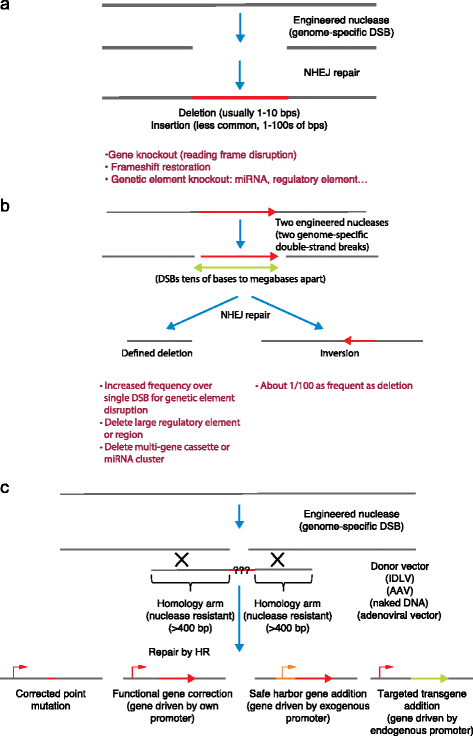Towards a new era in medicine: therapeutic genome editing
- PMID: 26694713
- PMCID: PMC4699361
- DOI: 10.1186/s13059-015-0859-y
Towards a new era in medicine: therapeutic genome editing
Abstract
Genome editing is the process of precisely modifying the nucleotide sequence of the genome. It has provided a powerful approach to research questions but, with the development of a new set of tools, it is now possible to achieve frequencies of genome editing that are high enough to be useful therapeutically. Genome editing is being developed to treat not only monogenic diseases but also infectious diseases and diseases that have both a genetic and an environmental component.
Figures

References
Publication types
MeSH terms
Grants and funding
LinkOut - more resources
Full Text Sources
Other Literature Sources
Medical

